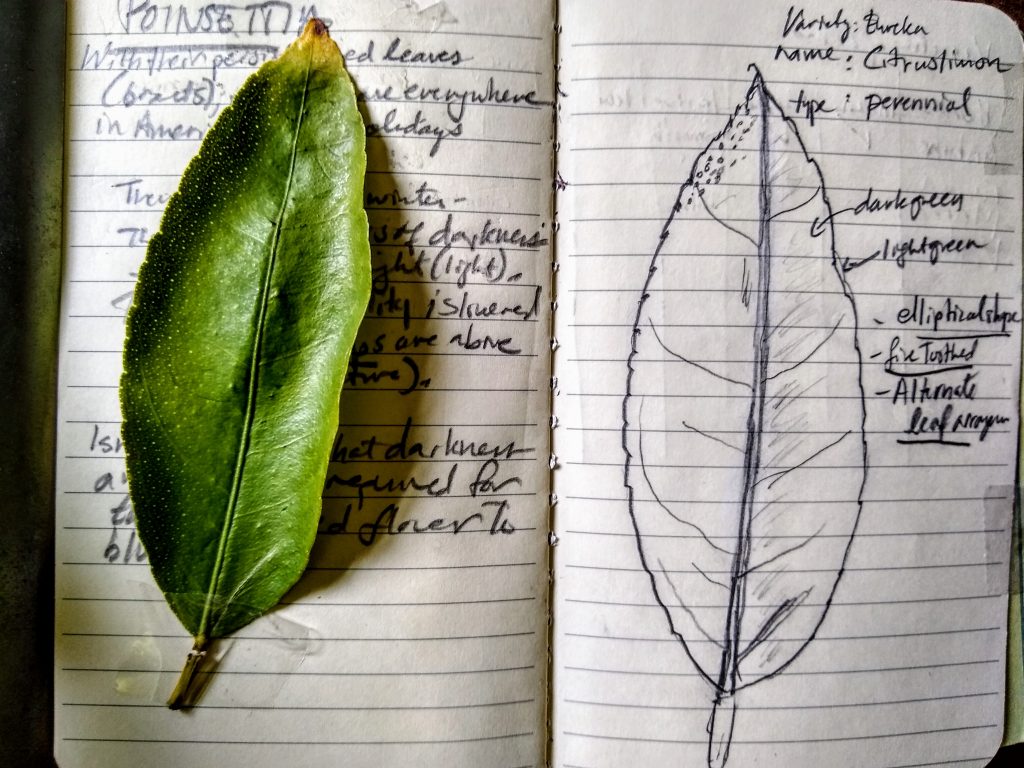Simple Criteria
We can use pattern on a leaf to identify its tree. Let’s start by zooming in to a leaf and working our way out.
- Vein pattern (Venation)
- Is there a single central vein with smaller veins branching off at intervals? Then, it is pinnate.
- Are there three or more central veins from the base spreading out like a fan? Then, it is palmate. (Think: maple leaf)
- If it is a mix of pinnate and palmate, the leaf is pinnipalmate.
- Are there parallel veins? Then it is parallel.
- Shape
- Is the leaf widest at the center, like an ellipse? Then it is elliptical.
- Is it widest about a third from the base and then tapers to the apex? Then, it is like a lance: lanceolate.
- If the reverse is true, then it is oblanceolate.
- Is it egg-shaped and widest below the middle? Then, it is ovate
- If the reverse is true, then it is obvate
- Is it many times longer than wide? Then, it is linear.
- Edge of the leaf
- Is the edge of the leaf smooth or does it have teeth (serrate)?
Now after looking at the leaf by itself, let’s zoom out and identify how the leaf is arranged on the stem.
- Arrangement
- Is the leaf connected to the stem by itself? If so, then it has an alternating arrangement.
- Are two leaves paired at the same height, one on each side of the stem? Then it has an opposite arrangement.
- Are two or more leaves found at the same node? Then, it is whorled.
Example: Lemon tree (citrus limon)
A perennial that bears fruit all year.

- Vein pattern (Venation): pinnate, a central vein with smaller branching veins
- Shape: Elliptical
- Edge of leaf: Serrate
Alternate arrangement on the stem. One leaf per a node, or connection to stem.